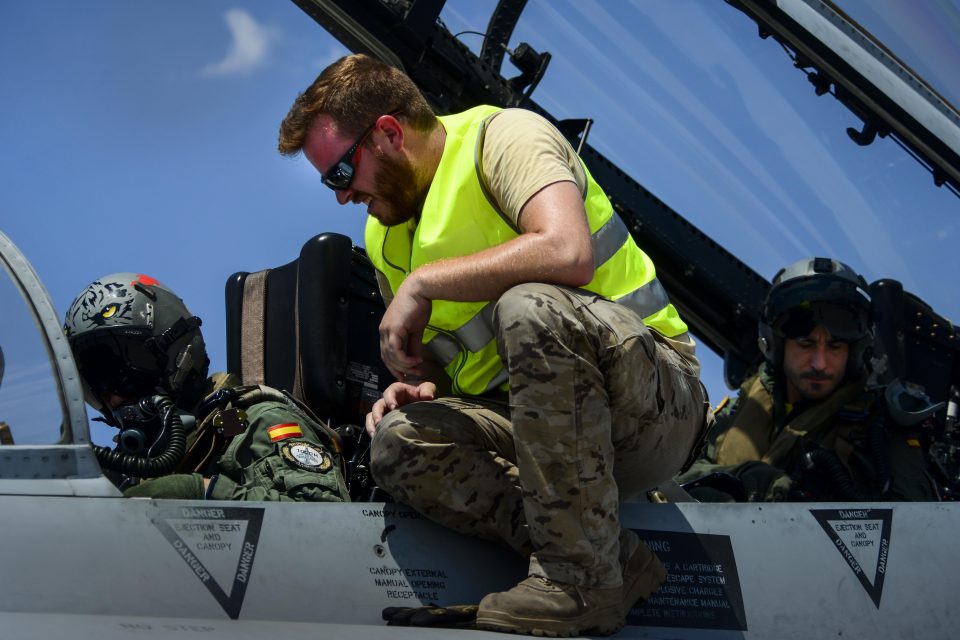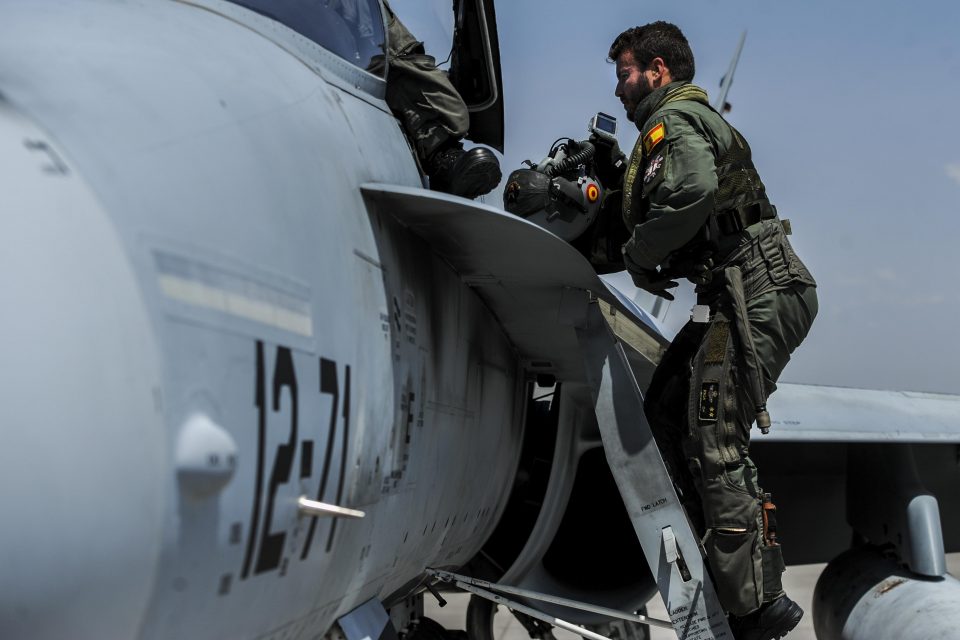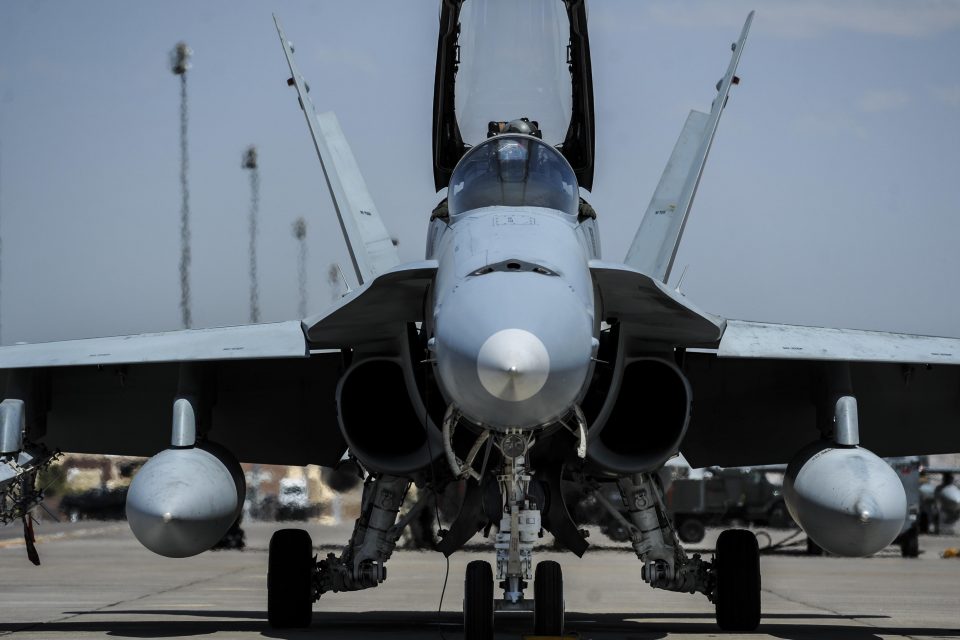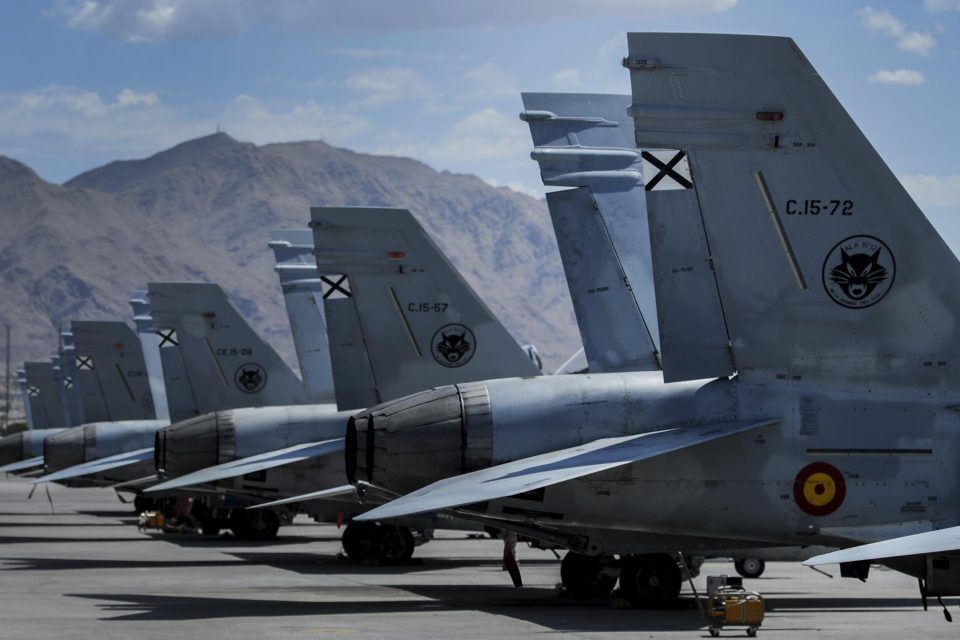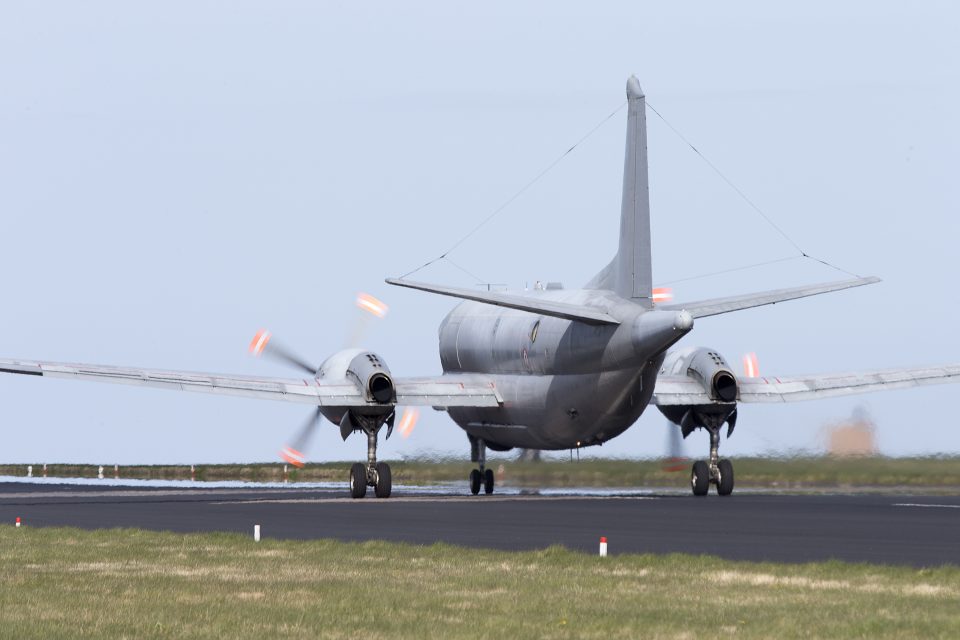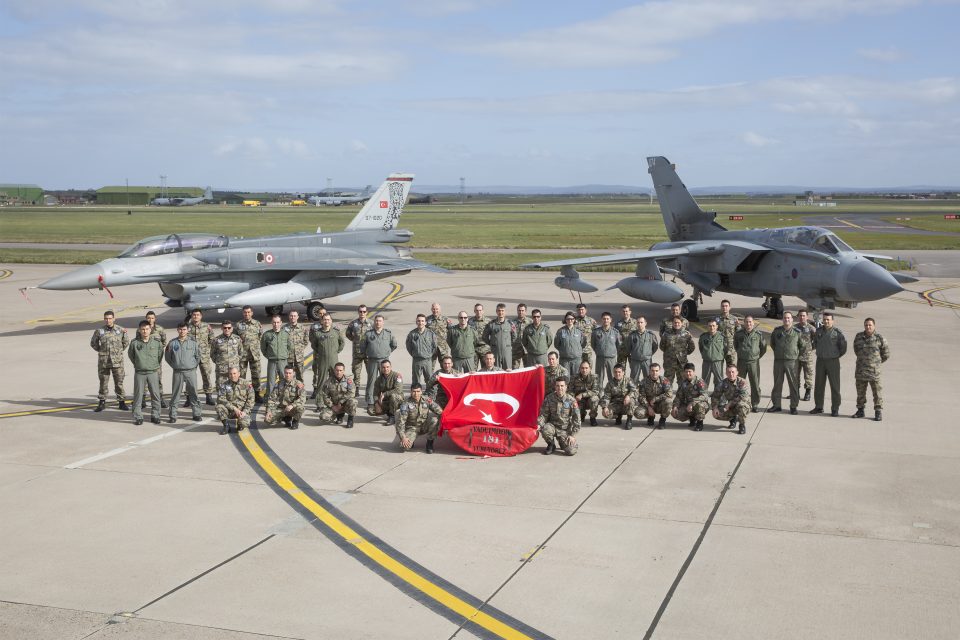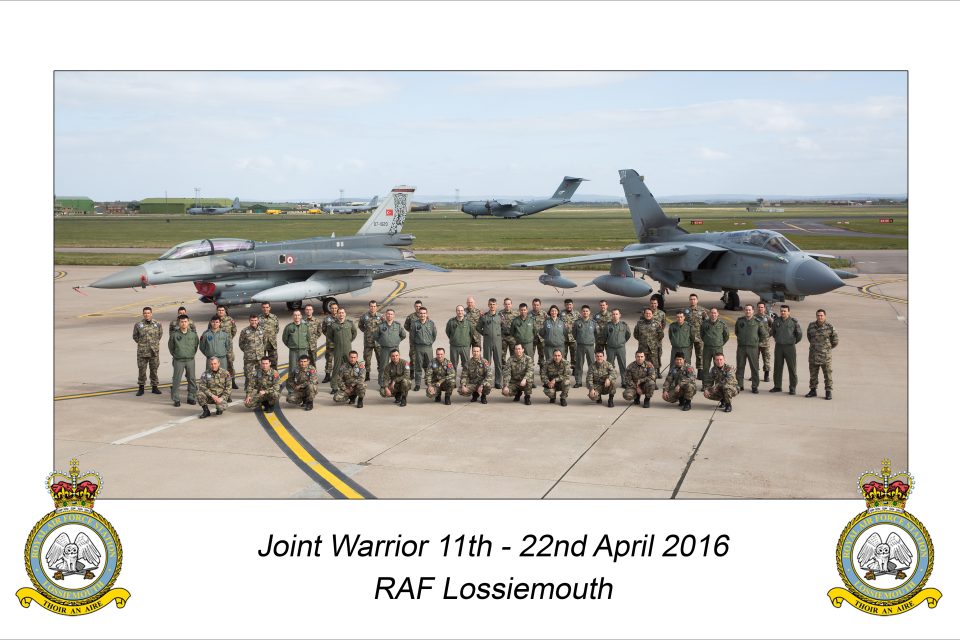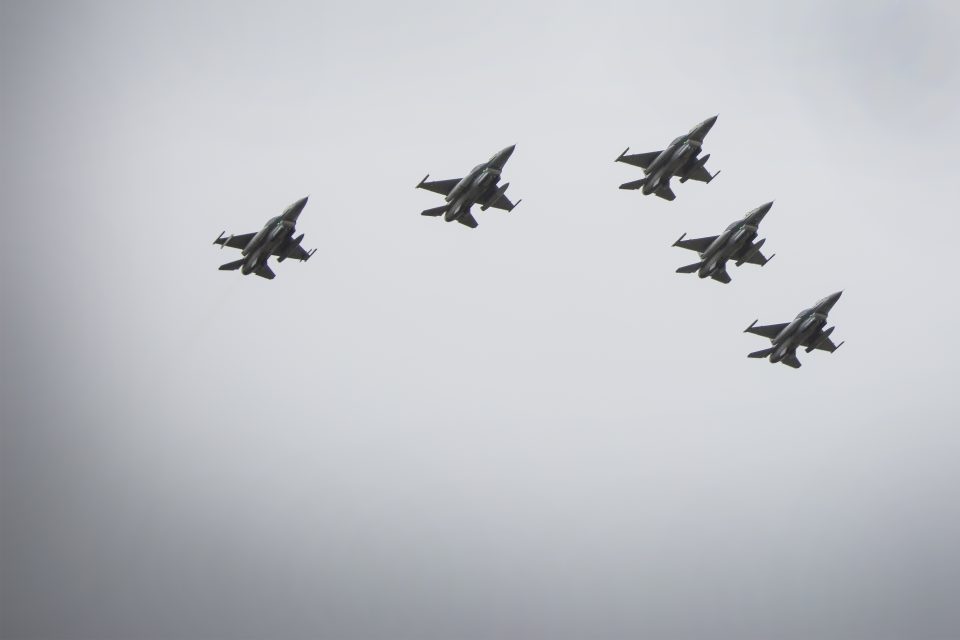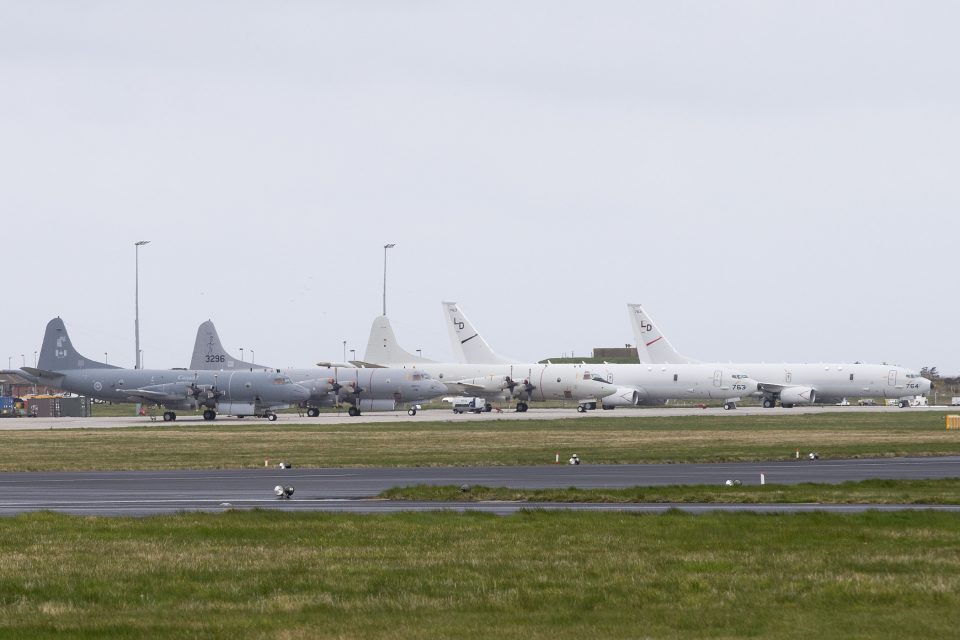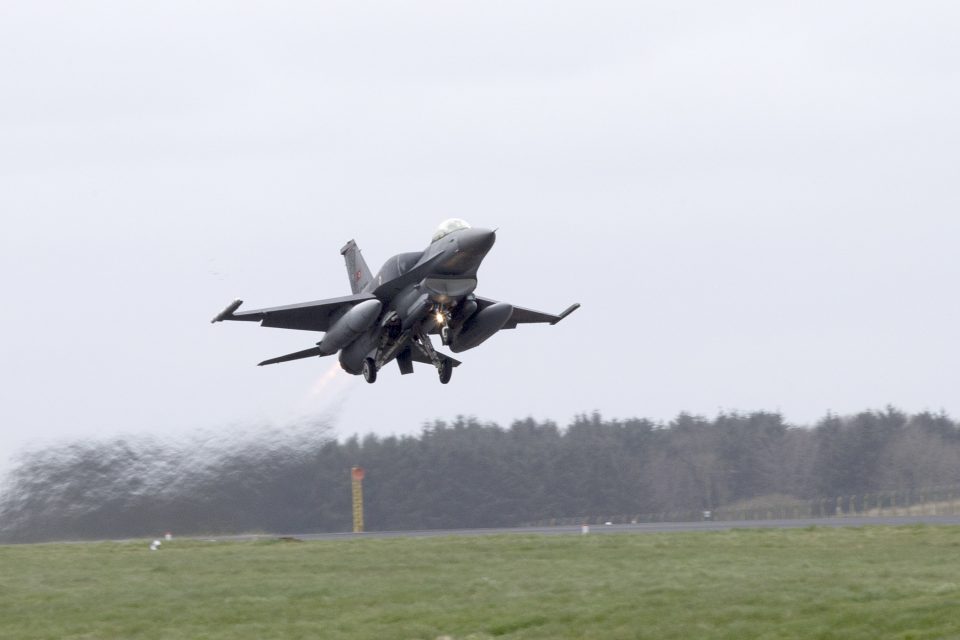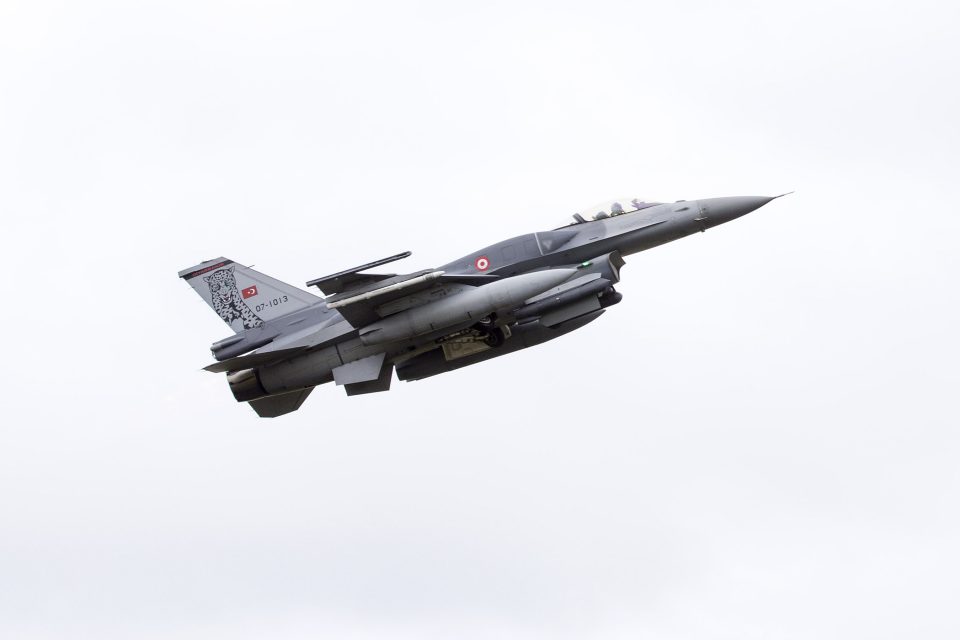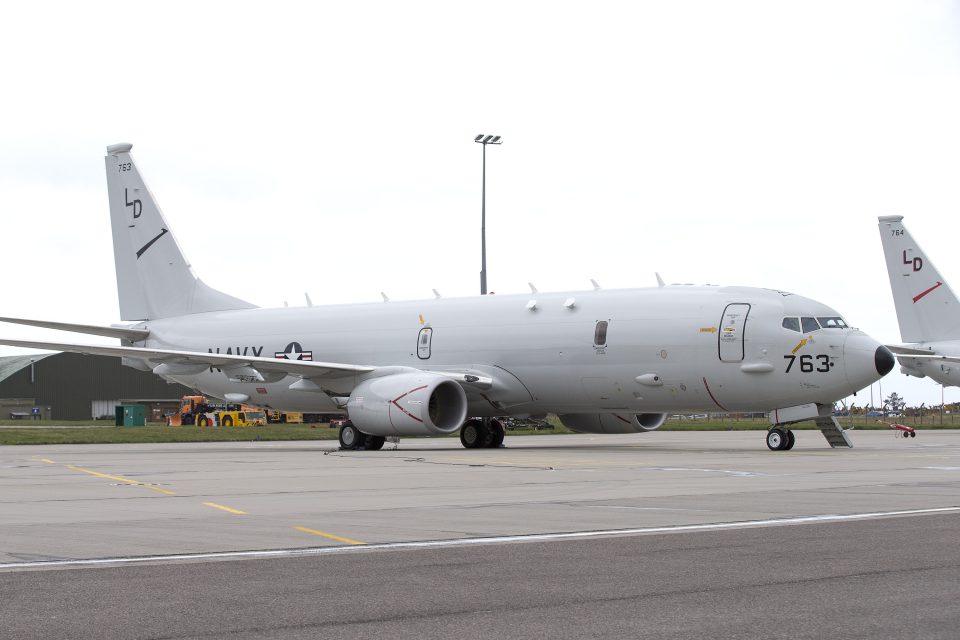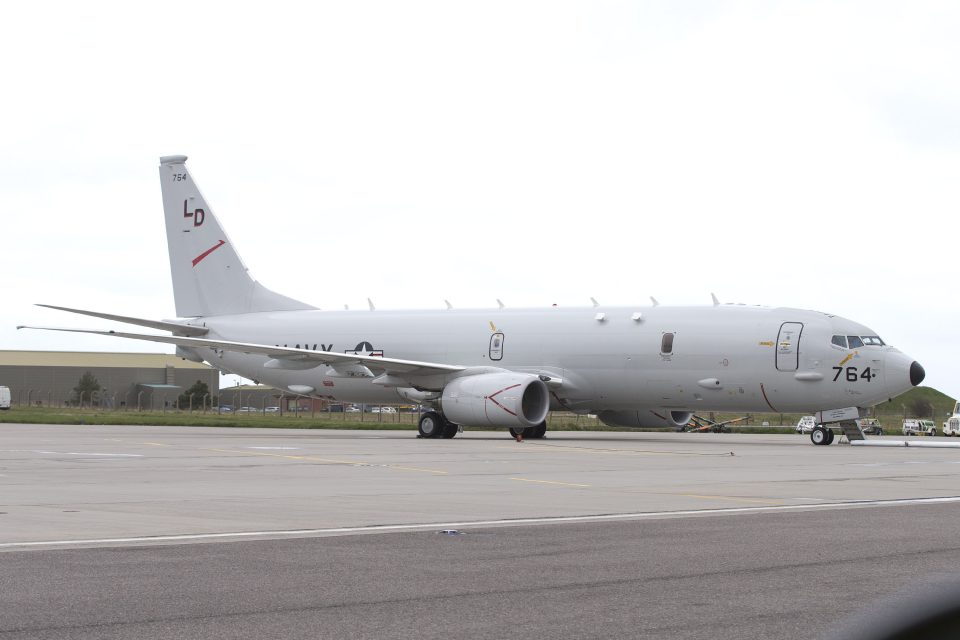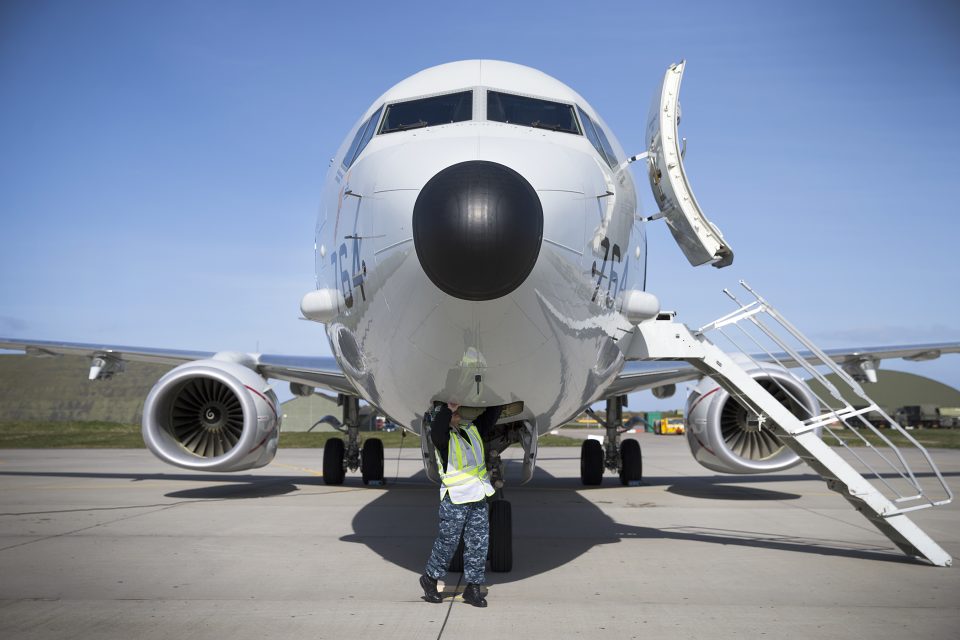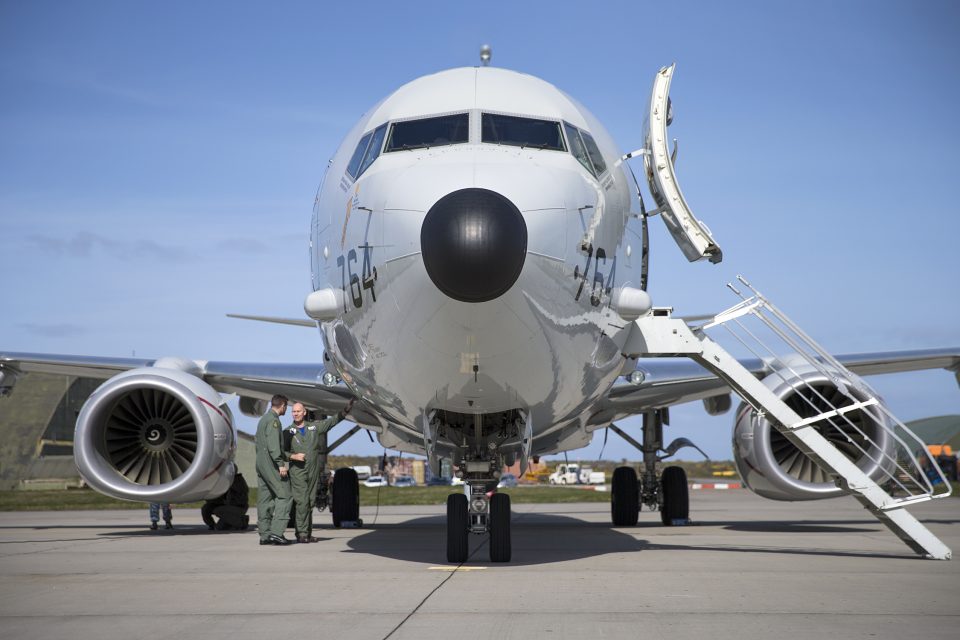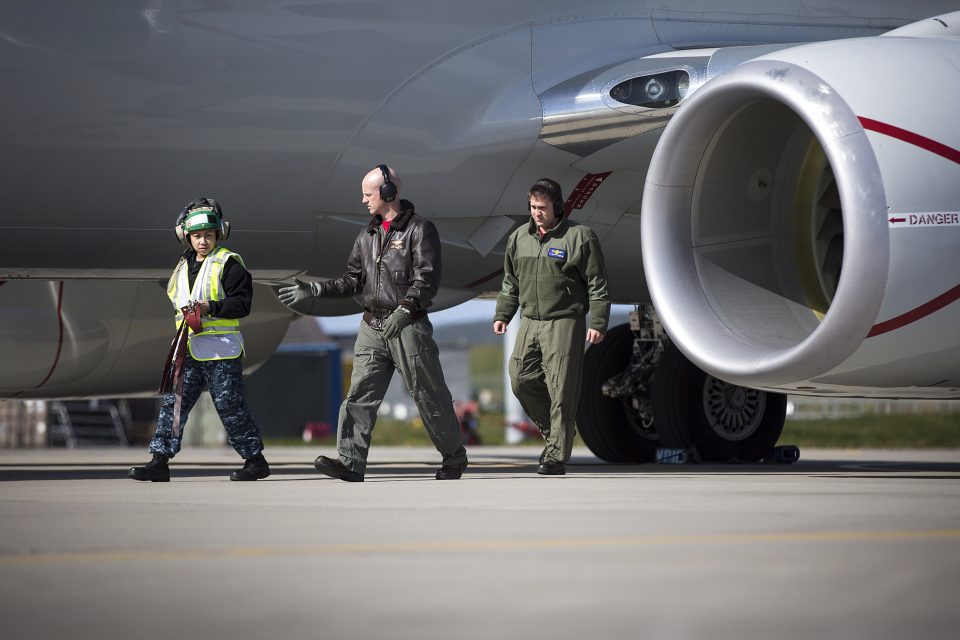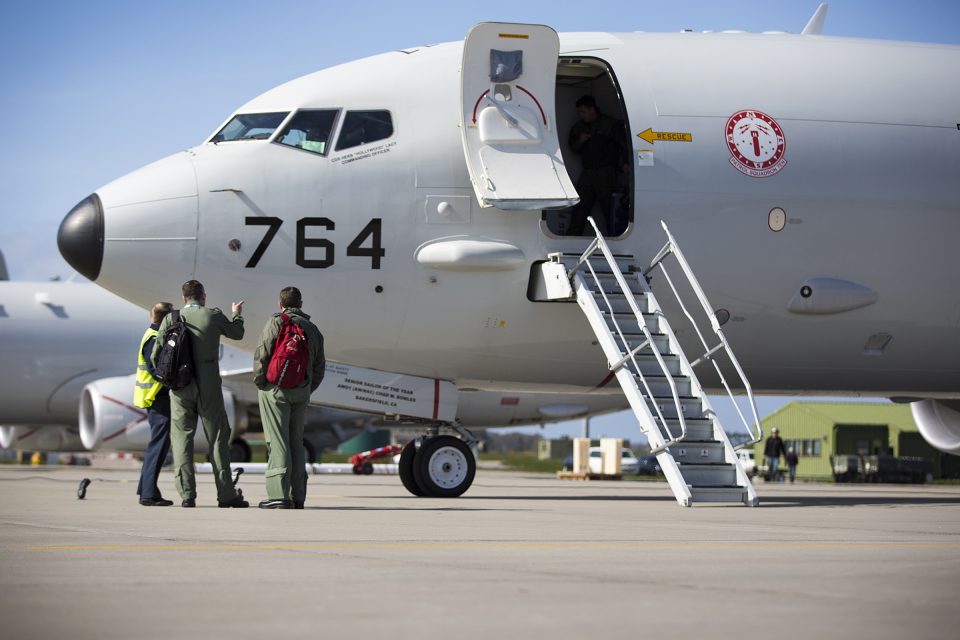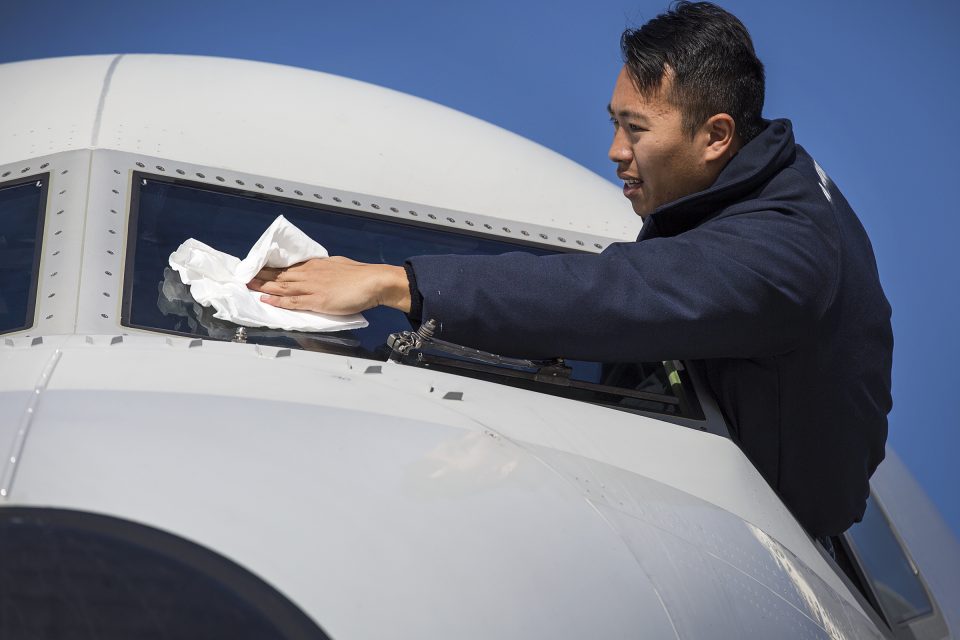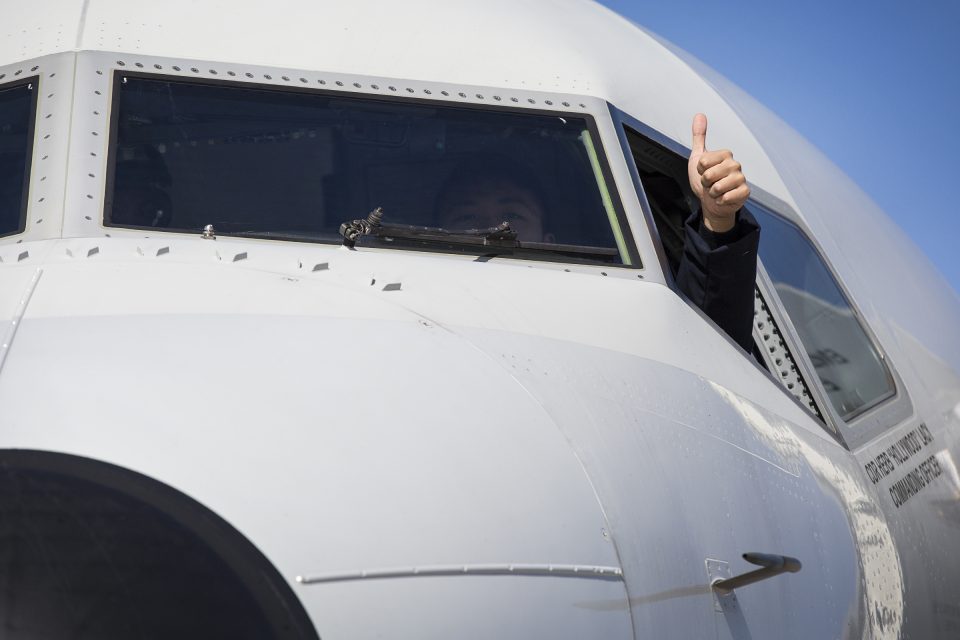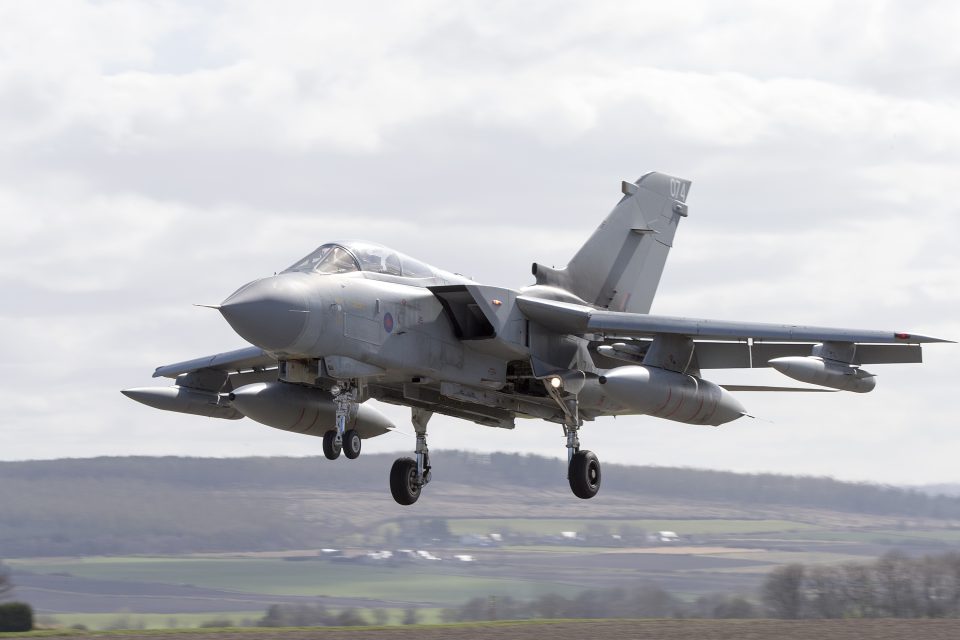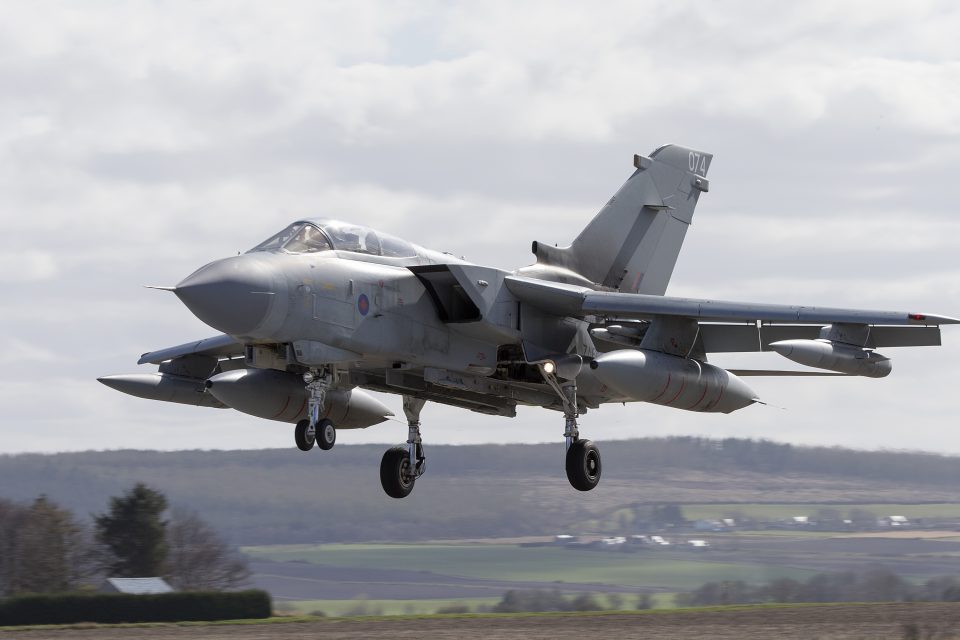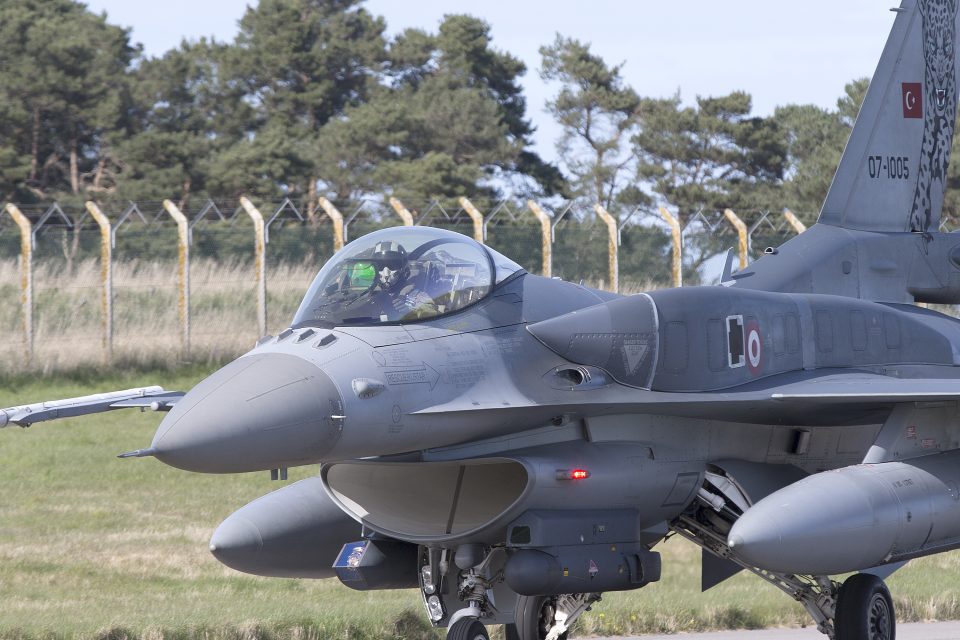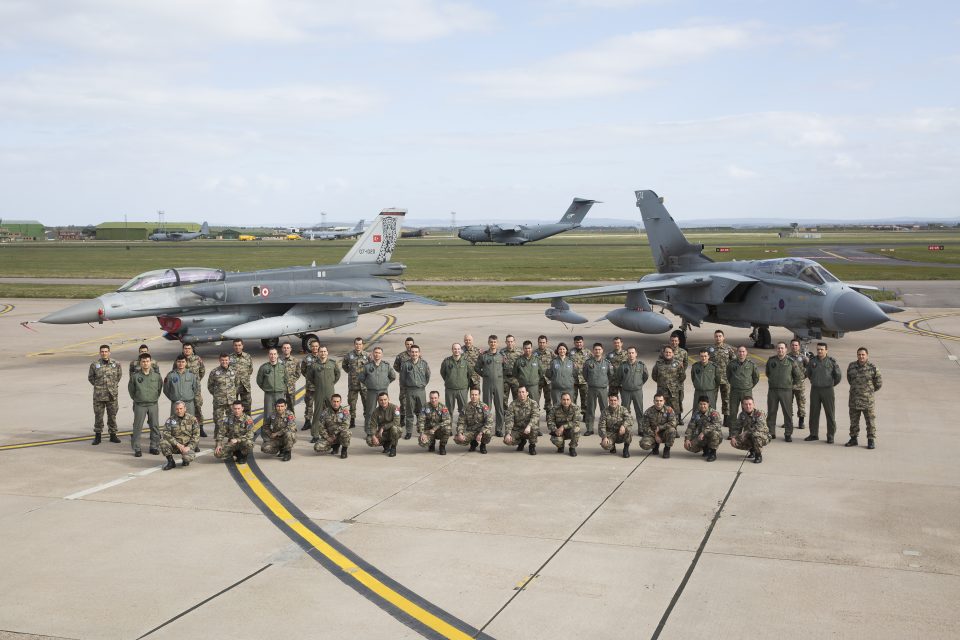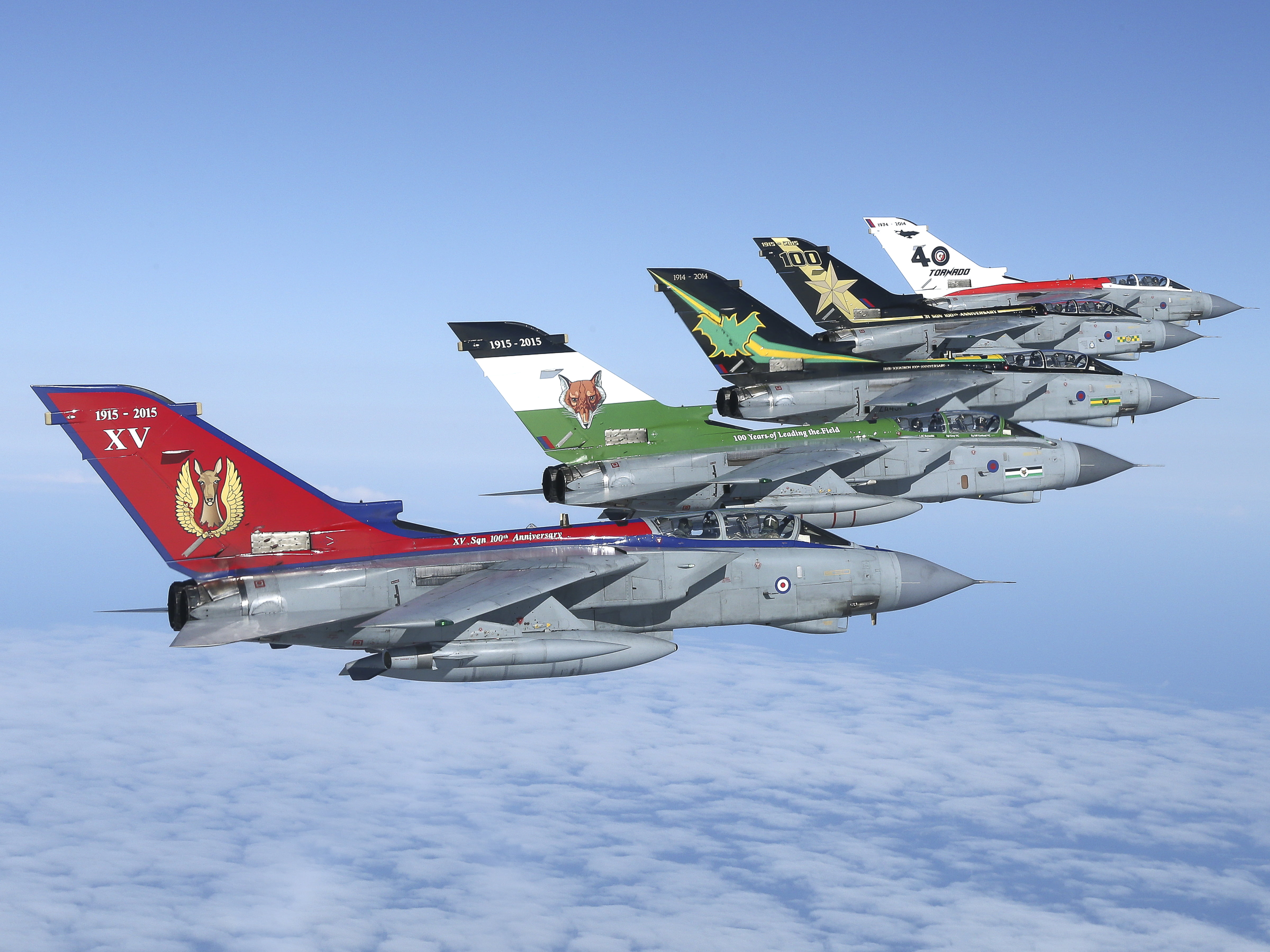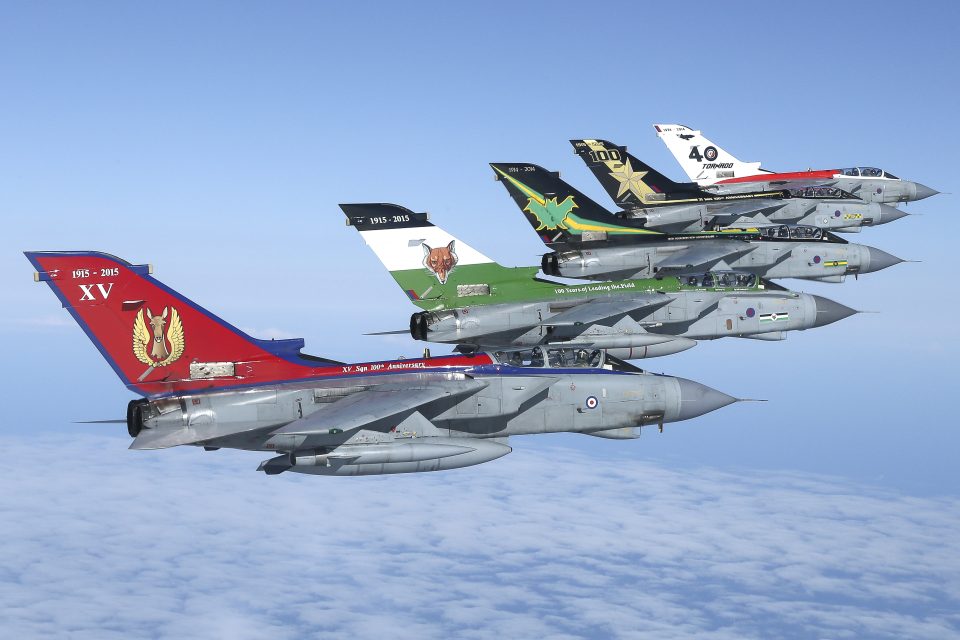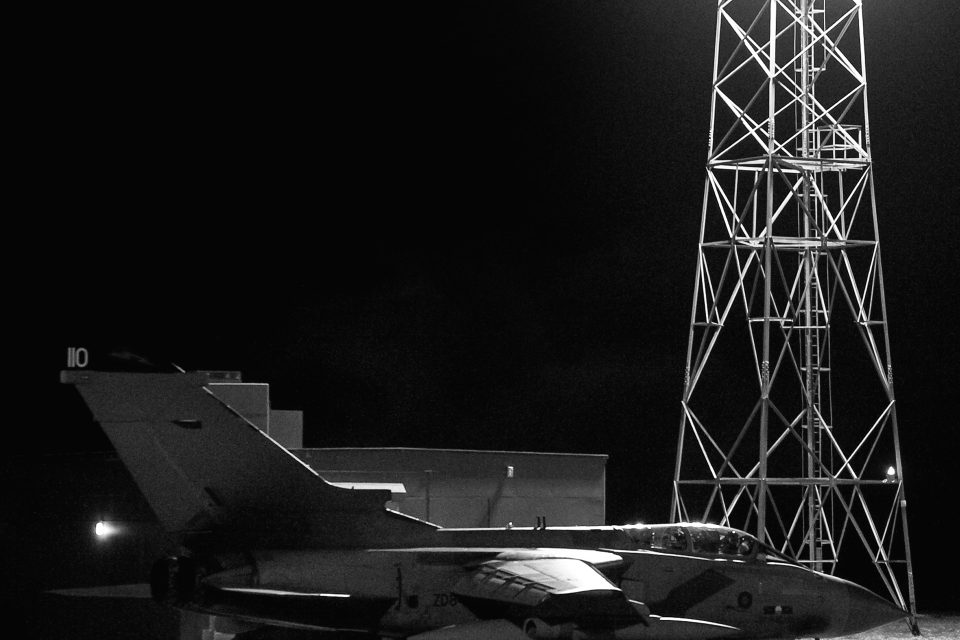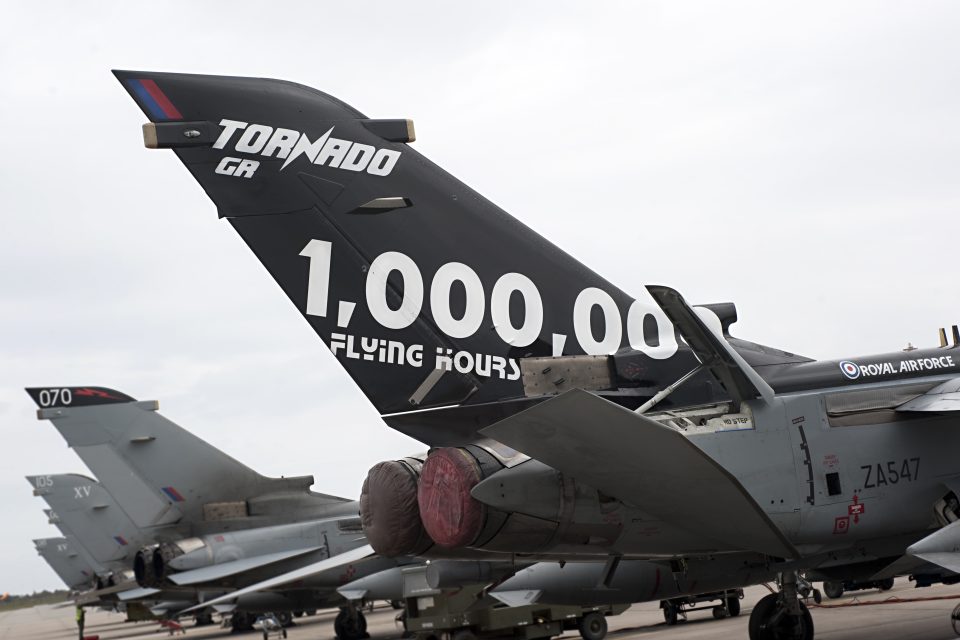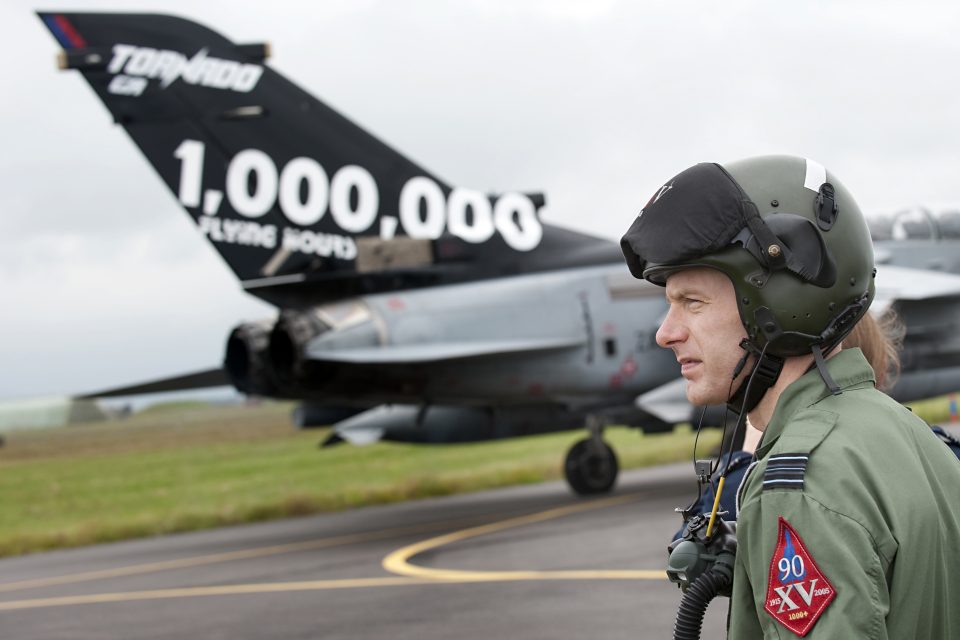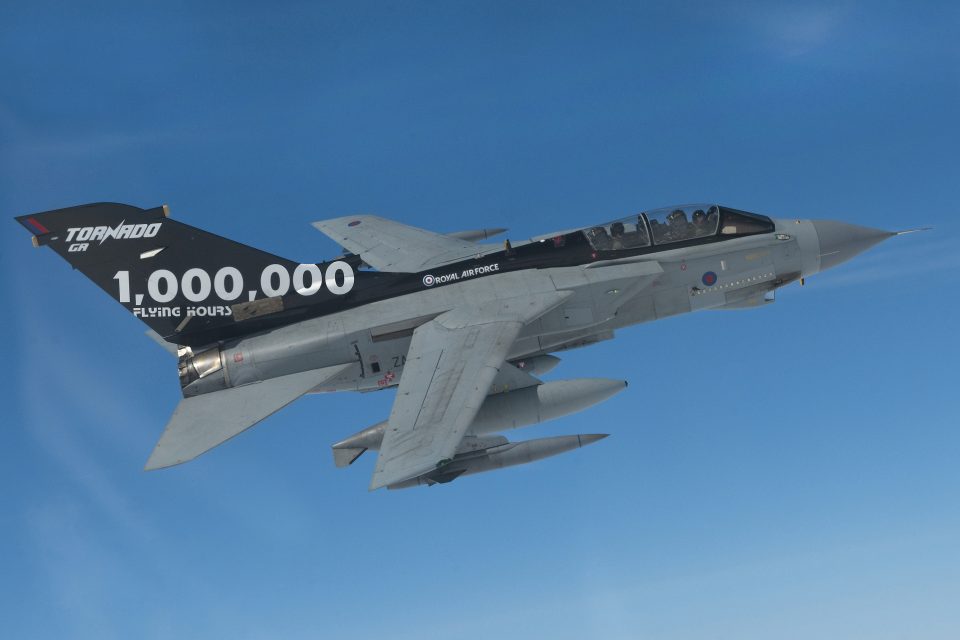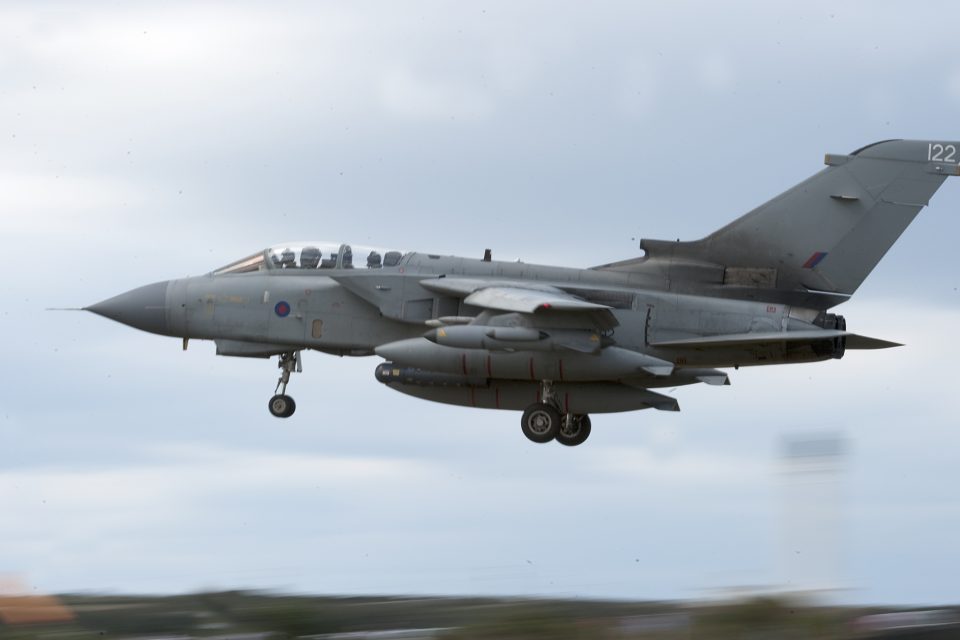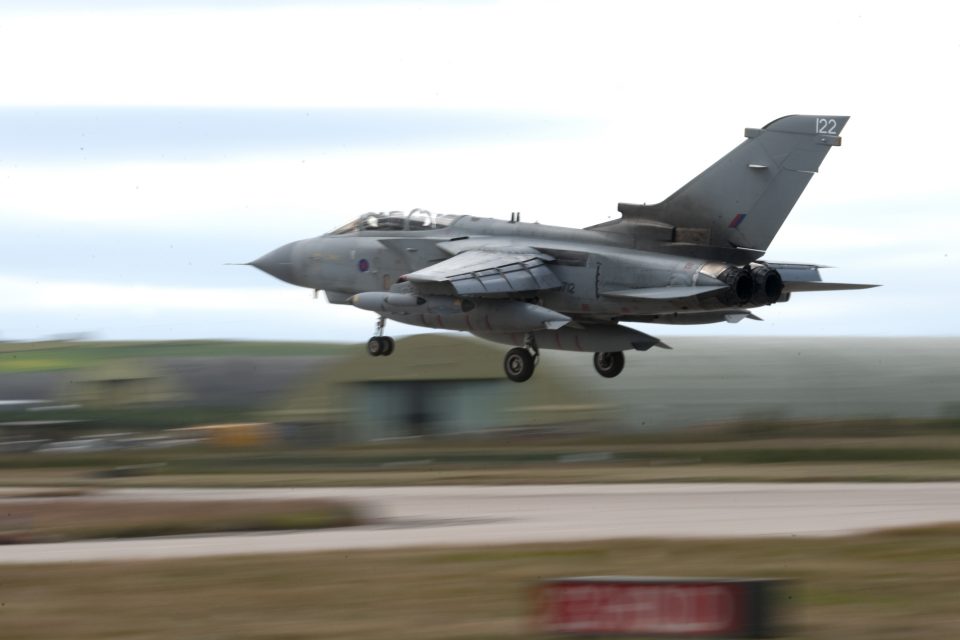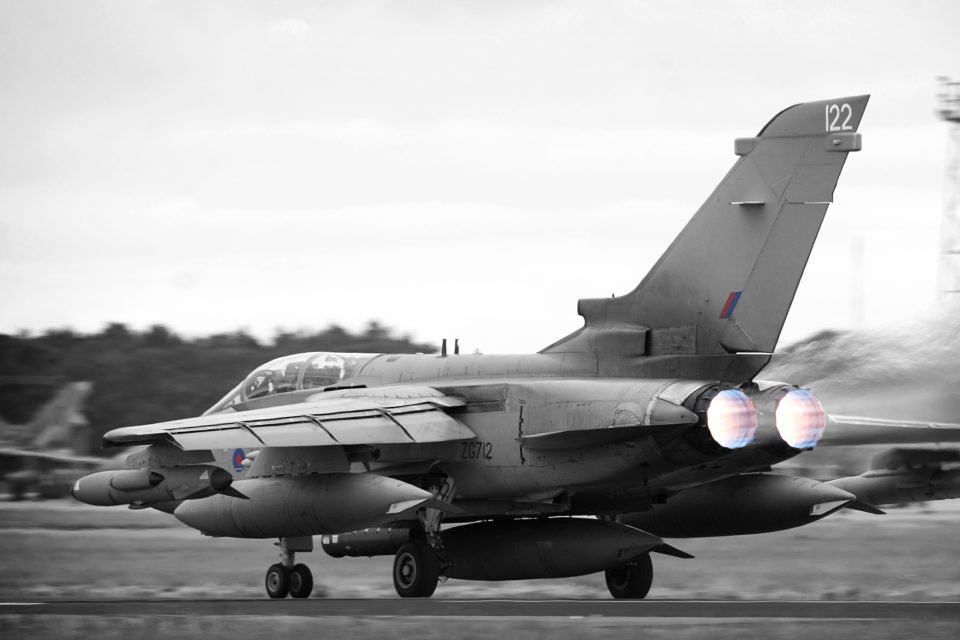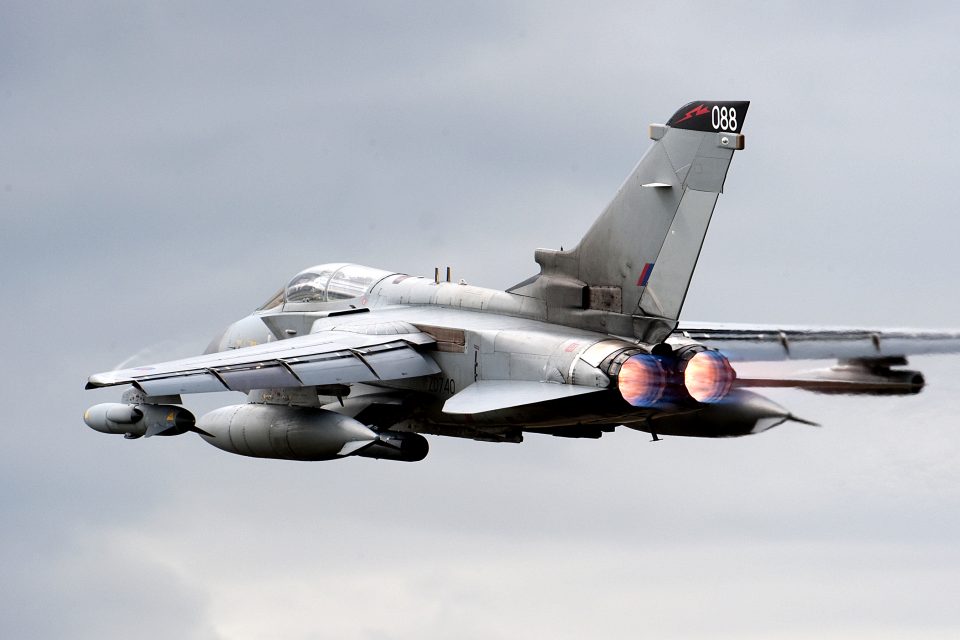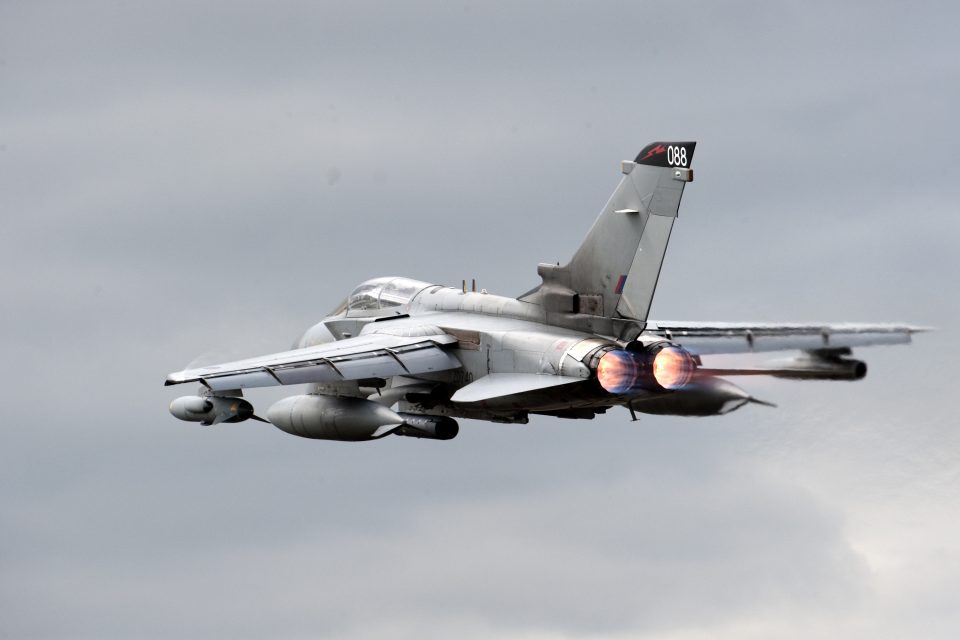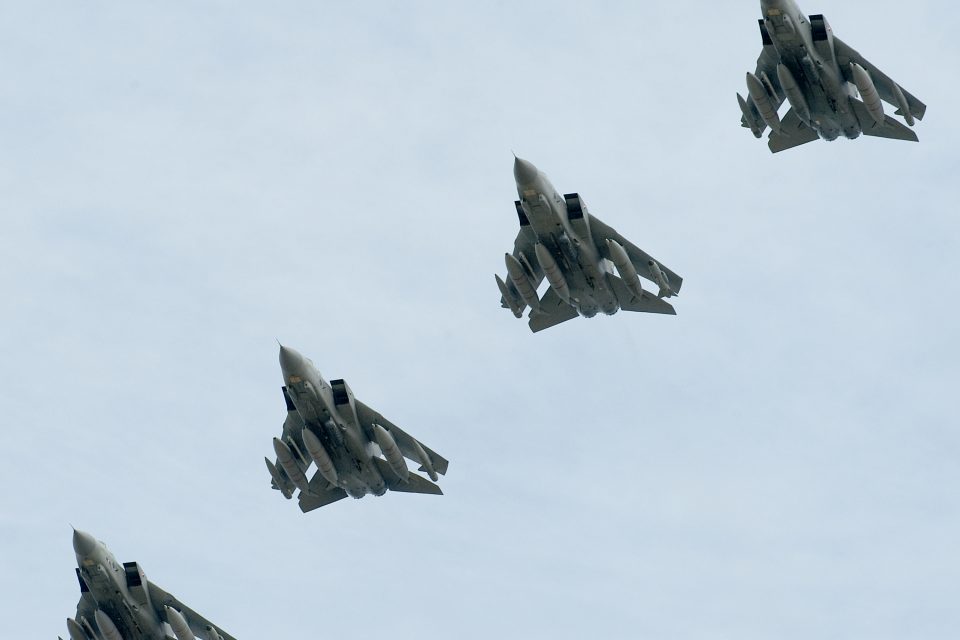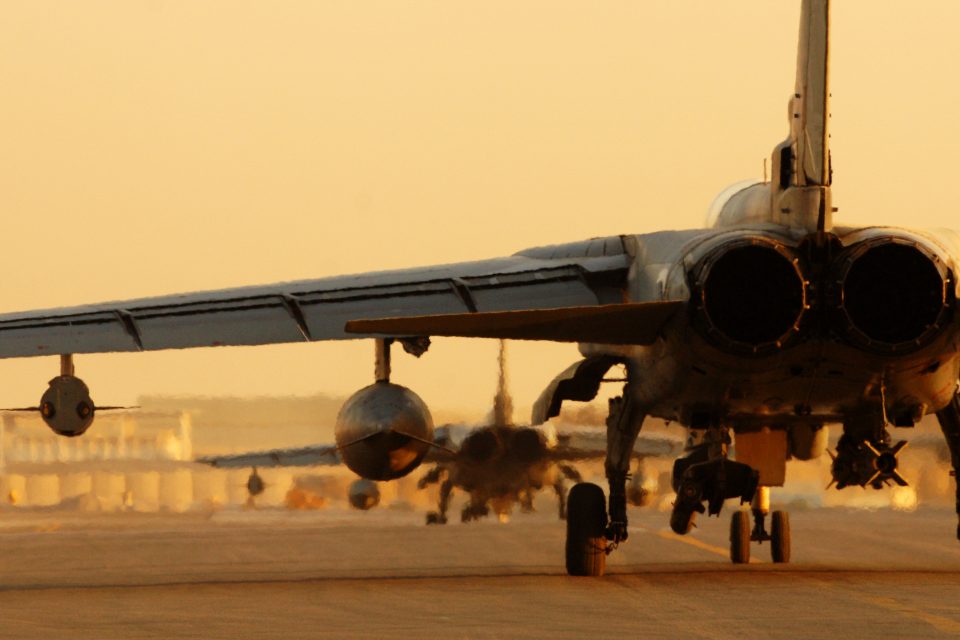2016-11-14 By Robbin Laird
On November 2, 2016, we had a chance to visit the Spanish Air Force at their Albacete Airbase and to talk with a Eurofighter pilot as well as senior maintenance officer.
They both had worked with Eurofighter in the latest Baltic Air Patrol earlier this year.
Albacete flies a regular Quick Reaction Alert force to provide for Spanish security in the Mediterranean.
The engagement in the Baltics is in effect a QRA mission further north.
In an article published on January 11, 2016 by the Spanish Air Force, the deployment earlier this year to the Baltics, which involved our hosts, was described.
http://www.ejercitodelaire.mde.es/EA/ejercitodelaire/en/media/news/2016/content/texto_0001.html
On January 4, four Eurofighter planes took off from Albacete Air Base with Siauliai in Lithuania as their destination.
Their aim was to join the VILKAS detachment and therefore carry out surveillance missions of the air space of the Baltic Republics of Estonia, Latvia and Lithuania.
In this way, NATOs commitment to the carrying out of air policing in the Baltic has been continued.
After four hours of flight and the re-fuelling of an Italian KC-767 in German airspace, the aircraft arrived without stopovers and without event at Siauliai.
Following the relief of the previous nation Hungary, the first alert service was in place within days.
Ahead, there are four months of air policing in the Baltic, under the command of Lieutenant Colonel Head of Force Juan Antonio Ballesta Miñarro.
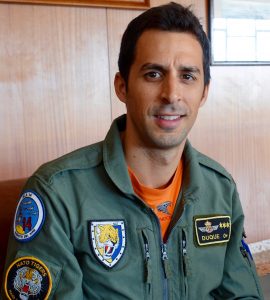
The 14th Wing will act as the lead nation of the assets deployed in the Baltic; specifically, of the Belgian F-16s stationed at Amari, Estonia.
Deployment of VILKAS Detachment Personnel
On January 3, the act of bidding farewell to the first relief of the Air Force personnel that will form part of the VILKAS detachment, within the framework of Operation Baltic Air Policing, took place at Albacete Air Base.
The contingent is made up of 105 military personnel, as well as one other staff member, and it belongs mainly to the 14th Wing.
It will unite with those that left from Spain with Siauliai Air Base, Lithuania, as their destination on December 27.
The objective was to reach full operative capacity on January 8.

This is the third time that the Air Force has participated in this mission. From August 1 to November 30 2006, it did so from Lithuania and as the lead nation, with four C.14 Mirage F-1s from the 14th Wing.
Later, from January 1 to May 4 2015, and with four C.16 Eurofighters from the 11th Wing, they carried out operations from Amari Air Base, Estonia. The Eurofighters from the 14th Wing will lead the missions during the first quarter of 2016: this time from Lithuania.
In total, approximately 230 personnel will form part of the detachment in the four months that the mission will last. Half way through it, a relief of crews, controllers, health workers and maintenance staff will take place.
The event was presided over by the Chief of Staff of Air Combat Command, Division General César Miguel Simón López, on behalf of the Chief of Staff of the Air Force, Air General Francisco Javier García Arnaiz. General Simón, who was accompanied by the Head of the 14th Wing and Albacete Air Base, Colonel Julio Nieto Sampayo, offered Christmas greetings to the members of the contingent and their families in the name of the Chief of Staff.
He also expressed the wish that the detachment´s tasks will pass without event.
Echoing the recent words of the President of the government, the general also reminded the attendant personnel that they are the “best ambassadors for Spain” outside of our borders.
Baltic Air Policing
“Baltic Air Policing” is a NATO mission framed within the principle of collective defence. It has as its aim the protection of the air space of the Baltic countries that lack their own resources to carry out air policing tasks.
(Also see, https://sldinfo.com/spain-takes-over-air-policing-mission-in-baltic-states/).
We had a chance to discuss this mission with Captains Antonio Duque Polo and Sergio Martinez Pėrez during our time at the base.
The 2015 mission was conducted in Estonia; the 2016 mission was done in Lithuania.
This year, the winter was especially cold and provided challenges for operations.
But another challenge was provided by the difference between the two bases.
“In Lithuania, we had two shelters from which to operate aircraft.
Obviously, given the extreme cold, we could not work on the aircraft outside, but needed to prepare them inside; the situation is different from Estonia where there are more facilities to operate our aircraft.”
Captain Duque noted that the first six weeks of the mission involved the set up by the support crews of their structure to support the Eurofighter as well as working with the back up flight crew for the mission, which was provided by the Hungarian Air Force flying Gripen fighters.
It was noted that the Spanish Air Force operated with their normal uniforms, rather than special winter gear, which added to the challenges as well.
But the Eurofighters performed well and according to Pėrez the support structure also worked well.
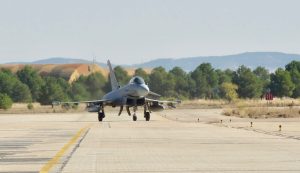
“We had a baseline established from earlier engagements to determine what we needed on the supply side for our Eurofighters.
These forecasts worked well. And with our Spanish digital logistic system we were able to order parts directly from Lithuania back to Spain to support the mission as well.”
Obvious, difficult conditions challenge any air combat asset.
A key challenge which they faced was the need to have well salted runways to operate the aircraft.
And the combat jets would kick up material from the runway into the landing gear areas and pose a challenge of diffusion of Foreign Object Debris or FOD within the aircraft.
“We worked hard on this challenge and found ways to deal with it during the mission,” commented Pėrez.
When asked about cross-talk among those Eurofighter squadrons had operated in the Baltics before them, both officers indicated that the experience of the Spanish squadron at Moron Airbase was a key baseline for them.
They also talked with German and British Eurofighter squadrons to shape their baseline for operational and support expectations.
Pėrez underscored the point that for Spain, the deployment to the Baltics was expeditionary and the support structure for Eurofighter performed well in this Baltic mission set.
After we discussed the Baltic mission, we toured the base starting with the maintenance facilities for Eurofighter at the base.
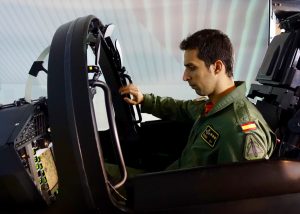
A simulation system is in place for training purposes.
The simulator is an excellent tool for refreshing training as well but a challenge as Eurofighter gets upgraded is to ensure that the software is upgraded in the simulator as well.
This simulator was described in a press release from Cassidian (now Airbus Defence and Space) in 2013 as follows:
A new Eurofighter flight simulator to be used by the aircrew of the 14th Wing of the Albacete Air Base has been delivered by Cassidian, adding to the two already installed at the Morón de la Frontera Air Base in Seville.
The simulator delivered is part of the ASTA advanced training system. Cassidian has been responsible for all tasks related to the installation and commissioning of this Cockpit Trainer/Interactive Pilot Station (CT/IPS-E) which, together with the Full Mission Simulator (FMS), form the ASTA.
The 19 ASTA systems in service in five of the nations operating the Eurofighter Typhoon combat aircraft – Austria, Germany, Italy, Spain and the United Kingdom – are intended for crew training.
This ranges from familiarisation with the aircraft to actual missions in highly complex tactical environments, using aircraft software code tailored to the simulator to reflect the behaviour of the aircraft and its embedded systems with a high degree of fidelity.
The simulators currently in service at the Morón de la Frontera Air Base have to date clocked up 6,500 hours of simulation including 4,800 training missions.
http://www.aero-news.net/index.cfm?do=main.textpost&id=379c7098-3065-46c3-b845-55af2cb1d8f8
With Spain having just received the latest version of Eurofighter, and with the simulator not having been upgraded, training is being done on a two seat Eurofighter which we visited as well on the base.
This version of software is what the British call their Operation Shader ready aircraft, namely the version where ground attack missions are now included in the combat envelope of the aircraft.
A good statement of the shift in capability was provided in an interview with an RAF 1 (F) squadron pilot based at RAF Lossiemouth:
“With Tranche 2, the pilot could type in the targeting information and the plane will then provide the data to execute the strike mission. This capability has been demonstrated in Operation Shader. And the targeting capability was so effective that JTACS actually were calling for the Typhoon/Paveway IV capability on a regular basis.
We had combat mass and significant strike capability which could be delivered rapidly and coalition partners quickly began to pick up on this capability.”
As he described the change in performance and its impact: “We could operate a four ship formation and strike 16 targets in one pass. We never could do that with Tranche 1.
And we provided close air support to our ground forces, and provide information to the ground forces to support their operations, with targeting information provided from the ground maneuver forces, or from our onboard sensors.”
This capability is now coming to the Spanish Air Force as earlier this year the Spanish Eurofighters have been testing their Paveway capabilities as well.
One change which would make the simulator a more powerful weapon system for the Spanish Air Force would be to link the Eurofighter simulator in Albacete with the more powerful one at Morón Air Base.
“This would expand our capability to train for more complex scenarios as well enhance the quality of our training.”
We visited two maintenance buildings.
The first was a building where engine maintenance was going on.
The engine for the Eurofighter is as they put it: “a good news story. It is very reliable and very maintainable and a significant upgrade over the engine we had on our earlier combat aircraft, the Mirage F-1.
It is a next generation engine.”
The engine is maintained in a vertical position and the crew can replace modules on the engine for engine repair.
But the bench tests need to be done at Morón Air Base near Seville.
The 14th Wing is hoping to be able to have their own bench test capabilities so that they do not need to send repaired engines forward to Morón Air Base for final verification.
We then visited an aircraft hanger where multiple repairs were underway.
One aircraft involved was a two seat Eurofighter in for its initial major repairs; and other aircraft where going through regular maintenance inside the facility.
A key asset for the Spanish Air Force is the logistics base which is paired with the combat base at Albacete.
Here the personnel are trained to work on the range of aircraft which the Spanish Air Force flies.
“They are a key asset in keeping the force operational.
But a challenge is the aging of the workforce and to renew the workforce.”
Currently, the other key combat aircraft flown by the Spanish Air Force (the Navy flies Harriers) is the F-18. Until the arrival of the Eurofighter, the F-18 was the key combat asset.
But as the Eurofighter has matured, the F-18 role has shifted from an air superiority mission to a ground attack mission. The Spanish Air Force does not fly Tornado, so that the F-18 is moving into this role.
This year, the Spanish F-18s went to Red Flag.
“We have done a great deal of modernization on the F-18 and find a very capable compliment to the Eurofighter. And as we gain experience with Eurofighter, its role is being expanded as well.
The Baltic Air Patrol has been an important mission in this regard,” according to Captain Antonio Duque.
In short, it is clear that the Baltic Air Patrol is an important mission for expanding the capability of European air forces to shape common approaches and capabilities.
For the Eurofighter there is an opportunity as well to shape a support structure, say in Estonia, so that Eurofighter could fly to the crisis and have prepositioned support equipment.
Such a possibility could flow from a key activity, which is ongoing at Albacete, namely the Eurofighter integration effort lead by the European Air Group.
As two senior officers at the European Air Group put it in an interview earlier this year:
Lt Col. Schiattioni underscored that “We managed to get the key people for each air force responsible for the standards for their national aircraft to shape a more global approach to standards.
And also important was bringing the maintainers together to share lessons learned and to shape more common maintenance procedures.”
Lt. Col. Lecube emphasized that the program has been very industry driven which meant that the operational commonality was not the center of attention.
“But at the squadron level there has been a growing interest ways to shape more operational commonality.
The Baltic patrolling was a key driver for this approach as well.
With the Spanish and the British e.g. operating together in the Baltic Air Patrol, it is crucial to operate a common SOP in such operations.”
A key achievement clearly is to shape a more common SOP for operations and maintenance which, of course, will become even more important as the Tranche 3 standard comes into play for the Eurofighter nations.
Underlying the new approach is a broad agreement reached many years ago where the seven Eurofighter nations agreed to broad ways to work together but the EAG as in other areas is focused on driving practical solutions.
Lt Col. Schiattioni added: “The sharing of information can provide a better way to underscore how each nation can pursue modernization but sort out which among the Eurofighter nations is interested in a solution generated by a particular nation.
This will allow national, bi-national approaches which can drive innovation for the larger Eurofighter enterprise.”
It is clear that the Spanish Air Force is operating under fiscal constraints, but it is also clear that the squadron leadership is working innovative ways to ensure that the optimal combat capability can be generated within those constraints.
In the slideshow above, the latest Eurofighter is seen at Albacete and is used as well for training to the new level of capabilities in the aircraft.
Editor’s Note: In this piece published by the El Pais about last year’s Baltic Air Patrol, a number of points are made about the mission.
Defense Minister: “We’re not here to create problems, we’re here to avoid them”
About 3,200 kilometers separate the Morón de la Frontera base outside Seville and the Ämari Air Base in Estonia, not to mention around 30 degrees in temperature.
Nevertheless, the Baltic republic’s brutal -15ºC weather has not hampered Spanish Eurofighter Typhoons from their duties protecting the region’s airspace. Planes from Group 11 of the Spanish Air Force have been in control of NATO’s Baltic Air Policing Mission (BAPM), based in Ämari, since January 1 and will continue there until May 4.
So far, the Eurofighters have conducted 108 patrols, clocking up nearly 200 hours of flight time. Only one flight had to be canceled because of technical problems.
“It has been better than we thought,” said Lt. Col. Enrique Fernández Ambel, who is heading the team of 115 Spanish officers of the Ambar detachment.
But the fears are real and the tension exists. NATO is concerned that the conflict may spill over from Ukraine, where the Kiev government has been fighting pro-Russian separatists.
Along the icy waters of the Baltic, two old Cold War adversaries can look directly into each others’ eyes at distances sometimes as close as 300 meters – that is how near Spanish Eurofighters have come to Russian aircraft during the interceptions that have taken place.
These testy encounters have occurred about half-a-dozen times when Russian Ilyushin and Antonov transport planes – modified for spying or electronic warfare – fly from St Petersburg to the Russian enclave of Kaliningrad Oblast, which is sandwiched between Lithuania and Poland.
Although the Russian jets have not violated Baltic airspace, they ignore international air navigation rules by not filing a flight plan, turning off their transponders so they can’t be identified, or refusing to communicate with civil aviation authorities.
The Spanish Eurofighters usually intercept and escort them under the orders of NATO’s Combined Air Operations Center (CAOC), based in Uedem, Germany.
Commander Eladio Daniel Leal said the tensest moments usually occur when the alarm goes off and “you just don’t know who you are going to encounter, or how they are going to react.”
NATO has been helping the Baltic nations patrol their airspace since 2004 as none of them has an air force of their own. Member countries take turns leading the mission.
But since the Ukraine crisis, NATO has beefed up its patrols. Besides the Spanish EF-2000s, fighter jets have also been dispatched from Italy, Poland and Belgium.
In a tense war of nerves, any wrong move can turn into a catastrophe. According to NATO figures, more than 400 interceptions of Russian planes by the Alliance’s jets occurred last year – more than double the number in 2013.
Although the Russian jets have not violated Baltic airspace, they ignore international air navigation rules
And each day the Kremlin is getting bolder. Last month, two Russian Tupolev Tu-95 bombers ventured as far as the English Channel, setting off an emergency dispatch of British and French jets.
The Norwegian government released a video that showed how an F-16 fighter nearly collided with one of the Russian bombers. But the biggest risk is that of a commercial jet getting entangled in these dangerous standoffs.
“We’re not here to create problems, but instead we’re here to avoid them,” said Spanish Defense Minister Pedro Morenés, who visited the detachment in Ämari on Wednesday.
The Spanish government is spending €9 million on having its four Eurofighters take part in the BAPM and hopes to repeat the mission next year.
http://elpais.com/elpais/2015/02/19/inenglish/1424342029_255173.html
And last year, Spanish F-18s participated in Red Flag at Nellis.
According to a story published by the US Air Force on September 2, 2016:
Since its inception in 1975, Red Flag has served as the pinnacle of air-to-air combat training for the Air Force and its allies.
For the Spanish Air Force, Red Flag 16-4 has been the perfect avenue to receive the best training for their aircrews and support personnel, as well as an avenue for overcoming unique challenges that aren’t always experienced in European exercises.
“With most of our experience coming from European exercises, we have mostly a European outlook,” said Spanish Air Force Capt. Dario Perez, an EF-18M pilot. “Working with the United States Air Force aircraft and its allies serves as a great chance to train in a non-European venue, and broaden our views.”
In order to expand their views, communication between allies can be a challenge for Spanish Air Forces, but at Red Flag this has not turned out to be a roadblock.
“As we are standardized with NATO everyone speaks the same language while we train,” said Spanish Air Force Capt. Esteve Ferran, a pilot. “With the NATO documents we use, everyone is on the same page and on the same sheet of music at all times. Like last time we were here in 2008 the exercise proved to be difficult at first, but once we got rolling it was excellent.”
Once settled in, Red Flag 16-4 offered unique trials for Spanish Air Force pilots and crews to overcome.
“While the Red Flag exercise here is similar to the exercises that we encounter in Europe, the surface-to-air threats that are part of Red Flag are top notch and always serve as a challenge,” Perez said.
While the surface-to-air threats that pilots face here at Red Flag 16-4 serve as a valuable aspect of training, they aren’t the only facet of Red Flag valuable for aircrews.
“Tactically speaking, the surface-to-air threats are top notch,” Ferran said. “Also, the ability to use live ordnance in training is something that we don’t always get access to when we participate in European exercises.”
With all of these benefits of Red Flag’s training there are also multiple challenges that aircrews have had to face.
“One of the most difficult things about this exercise has been the act of deploying all of our assets here,” Ferran said. “It has been difficult, and staging out of Nellis was the first challenge we faced. Then, the night operations of Red Flag have also been a challenge. There is a nine-hour difference between the time zones and so when we finish operations we then have briefings at 3 a.m. It gets tiring and becomes a challenge and is something that we don’t see in European exercises.”
While these challenges, coupled with the tests of the monsoon weather that Las Vegas has brought to Red Flag 16-4, have presented Spanish air force with obstacles, they haven’t stopped pilots and aircrews from overcoming them.
Taking these obstacles in stride, the Spanish Air Force has used one of the premier air-to-air exercises that the Air Force offers to gain excellent training experience for aircrews.
All photos are credited to Second Line of Defense (Chloe Laird) except the F-18 photos which are credited to the USAF.
The slideshow showing Typhoons during the EAG Typhoon interoperability exercise in Spain and the photos are credited to the Spanish Air Force and the European Air Group.



